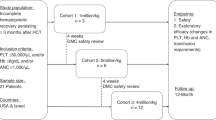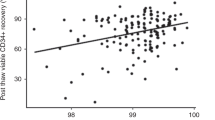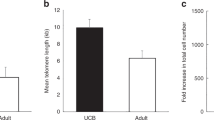Summary:
In placental/umbilical cord blood (PCB) banking and PCB transplantation (PCBT), long-term cryopreservation of hematopoietic stem and progenitor cells is a unique requirement as compared to that for bone marrow transplantation and cytokine-mobilized peripheral blood transplantation. A long period of severe thrombocytopenia is a problem in many patients after PCBT. The object of this study was to define whether megakaryocytic progenitor cells (CFU-Meg), which produce platelets, are more sensitive to cryopreservation than the other myeloid progenitor cells in PCB. The leukocyte concentrates (LCs) obtained from clinical PCB banks were cryopreserved, and progenitor cell recoveries were determined by differential count of colony-forming cells (CFCs). The LCs were exposed to stresses which cells face during freezing, thawing, and washing out cryoprotectants. Most of the myeloid progenitor cells contained in the LCs showed good survival when cryopreserved at slow cooling rates, although cellular injury was observed at higher cooling rates and higher osmolalities. In contrast, the recovery rate of CFU-Meg was significantly lower than other progenitor cells, indicating a higher sensitivity to the various stresses they were exposed to during cryopreservation. Thrombocytopenia observed in patients receiving PCBT may be explained, at least in part, by the disappearance of CFU-Meg during cryopreservation.
This is a preview of subscription content, access via your institution
Access options
Subscribe to this journal
Receive 12 print issues and online access
$259.00 per year
only $21.58 per issue
Buy this article
- Purchase on Springer Link
- Instant access to full article PDF
Prices may be subject to local taxes which are calculated during checkout






Similar content being viewed by others
References
Gluckman E, Broxmeyer HE, Auerbach AD et al. Hematopoietic reconstitution in a patient with Fanconi anemia by means of umbilical cord blood from an HLA-identical sibling. N Engl J Med 1989; 321: 1174–1178.
Rubinstein P, Rosenfield RE, Adamson JW, Stevens CE . Stored placental blood for unrelated bone marrow reconstitution. Blood 1993; 81: 1679–1690.
Wagner JE, Kernan NA, Steinbuch M et al. Allogeneic sibling umbilical cord blood transplantation in children with malignant and non-malignant disease. Lancet 1995; 346: 214–219.
Kurtzberg J, Laughlin M, Graham ML et al. Placental blood as a source of hematopoietic stem cells for transplantation into unrelated recipients. N Engl J Med 1996; 335: 157–166.
Wagner JE, Rosenthal J, Sweetman R et al. Successful transplantation of HLA-matched and HLA-mismatched umbilical cord blood from unrelated donors: analysis of engraftment and acute graft-versus-host disease. Blood 1996; 88: 795–802.
Gluckman E, Rocha V, Boyer-Chammard A et al. Outcome of cord-blood transplantation from related and unrelated donors. N Engl J Med 1997; 337: 373–381.
Rubinstein P, Dobrila L, Rosenfield RE et al. Processing and cryopreservation of placental/umbilical cord blood for unrelated bone marrow reconstitution. Proc Nat Acad Sci USA 1995; 92: 10119–10122.
Rubinstein P, Carrier C, Scaradavou A et al. Outcomes among 562 recipients of placental blood transplants from unrelated donors. N Engl J Med 1998; 339: 1565–1577.
Wagner JE . Umbilical cord transplantation. Leukemia 1998; 12 (Suppl. 1): S30–S32.
Sirchia G, Rebulla P . Placental/umbilical cord blood transplantation. Haematologica 1999; 84: 738–747–747.
Anasetti C, Amos D, Beatty PG et al. Effect of HLA compatibility on engraftment of bone marrow transplants in patients with leukemia or lymphoma. N Engl J Med 1989; 320: 197–204.
Kernan NA, Bartsch G, Ash RC et al. Analysis of 462 transplantations from unrelated donors facilitated by the National Marrow Donor Program. N Engl J Med 1993; 328: 593–602.
Balduzzi A, Gooley T, Anasetti C et al. Unrelated donor marrow transplantation in children. Blood 1995; 86: 3247–3256.
Takahashi TA, Shibata K, Kashiwakura I et al. The effect of a hematopoietic-promoting factor (HPF) extracted from porcine kidney on the proliferation of human hematopoietic progenitor cells. Res Commun Mol Path 1996; 91: 185–193.
Kashiwakura I, Takahashi TA . Basic fibroblast growth factor-stimulated ex vivo expansion of human hematopoietic progenitor cells from placental and umbilical cord blood. Br J Haematol 2003; 122: 1–10.
Kashiwakura I, Kuwabara M, Inanami O et al. Radiation sensitivity of megakaryocyte colony-forming cells in human placental/umbilical cord blood. Radiat Res 2000; 153: 144–152.
Siena S, Bregni M, Bonsi L et al. Increase in peripheral blood megakaryocyte progenitors following cancer therapy with high-dose cyclophosphamide and hematopoietic growth factors. Exp Hematol 1993; 21: 1583–1590.
Hagiwara T, Kodama I, Horie K et al. Proliferative properties of human umbilical cord blood megakaryocyte progenitor cells to human thrombopoietin. Exp Hematol 1998; 26: 228–235.
Handelsman H . Autologous peripheral stem-cell transplantation. Health Technol Assess (Rockv) 1995; 5: 1–16.
Woods EJ, Liu J, Derrow CW et al. Osmometric and permiability characteristics of human placental/umbilical cord blood CD34+ cells and their application to cryopreservation. J Hematother Stem Cell Res 2000; 9: 161–173.
Hunt CJ, Armitage SE, Pegg DE . Cryopreservation of umbilical cord blood: 2. Tolerance of CD34+ cells to multimolar dimethyl sulphoxide and the effect of cooling rate on recovery after freezing and thawing. Cryobiology 2003; 46: 76–87.
Crowe JH, Tablin F, Tsvetkova N et al. Are lipid phase transitions responsible for chilling damage in human platelets? Cryobiology 1999; 38: 180–191.
Drygalski A, Xu G, Constantinescu D et al. The frequency and proliferative potential of megakaryocytic colony-forming cells (Meg-CFC) in cord blood, cytokine-mobilized peripheral blood and bone marrow, and their correlation with total CFC numbers: implications for the quantitation of Meg-CFC to predict platelet engraftment following cord blood transplantation. Bone Marrow Transplant 2000; 25: 1029–1034.
Conrad PD, Emerson SG . Ex vivo expansion of hematopoietic cells from umbilical cord blood for clinical transplantation. J Leukocyte Biol 1998; 64: 147–155.
Gluckman E . Current status of umbilical cord blood hematopoietic stem cell transplantation. Exp Hematol 2000; 28: 1197–1205.
Demirer T, Ilhan O, Arat M et al. CD41+ and CD42+ hematopoietic progenitor cells may predict platelet engraftment after allogeneic peripheral blood stem cell transplantation. Clin Apheresis 2001; 16: 67–73.
Begemann PG, Hassan HT, Kroger N et al. Correlation of time to platelet engraftment with amount of transplanted CD34+CD41+ cells after allogeneic bone marrow transplantation. J Hematother Stem Cell Res 2002; 11: 321–326.
Zauli G, Valvassori L, Capitani S . Presence and characteristics of circulating megakaryocyte progenitor cells in human fetal blood. Blood 1993; 81: 385–390.
Bruno E, Murray LJ, DiGiusto R et al. Detection of a primitive megakaryocyte progenitor cell in human fetal bone marrow. Exp Hematol 1996; 24: 552–558.
Miyazaki R, Ogata H, Iguchi T et al. Comparative analyses of megakaryocytes derived from cord blood and bone marrow. Br J Haematol 2000; 108: 602–609.
Pick M, Eldor A, Grisaru D et al. Ex vivo expansion of megakaryocyte progenitors from cryopreserved umbilical cord blood. A potential source of megakaryocytes for transplantation. Exp Hematol 2002; 30: 1079–1087.
Acknowledgements
We thank Yasuo Tokushima, Makoto Enomoto, Mie Midorikawa, and Norihisa Sasayama for their special contribution to this study.
Author information
Authors and Affiliations
Corresponding author
Rights and permissions
About this article
Cite this article
Xu, Y., Kashiwakura, I. & Takahashi, T. High sensitivity of megakaryocytic progenitor cells contained in placental/umbilical cord blood to the stresses during cryopreservation. Bone Marrow Transplant 34, 537–543 (2004). https://doi.org/10.1038/sj.bmt.1704632
Received:
Accepted:
Published:
Issue Date:
DOI: https://doi.org/10.1038/sj.bmt.1704632



